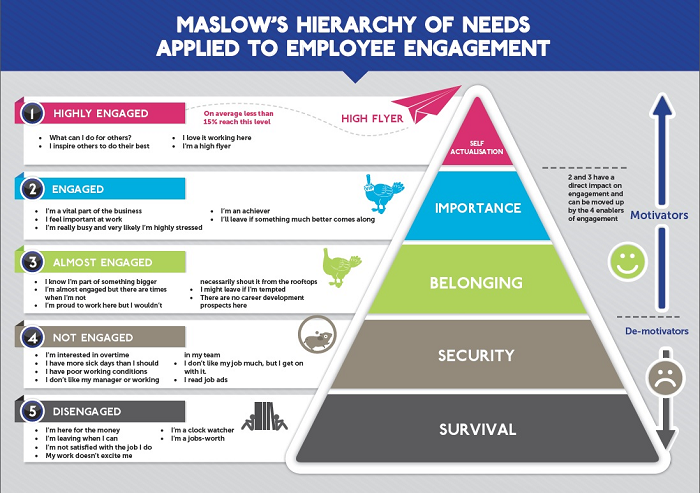At the recent Motivation Show in Chicago almost every other workshop had the words “ employee engagement” in its title. Why the focus? A higher level of engaged employees is more than an aspiration for progressive businesses; it is a necessary requirement if sustained competitive advantage in the new information economy is to be realized. As a result HR is being pressured by other stakeholders within the enterprise to devise conditions and tools that foster engagement.
Employee engagement is shaped by a number of distinct variables: individual attributes i.e. personality, role characteristics, the quality of work relationships, and perceptions of the ethos and values of the organization and how the individual employee feels he/she fits in.
Recent research has focused on developing a better understanding of how these variables interact and their link to important work outcomes. From the perspective of the employee, ‘outcomes’ range from strong commitment to disaffection.
What surveys say about employee engagement
Watson Wyatt found that high-commitment organizations out-performed those with low commitment by 47%. In a study of professional service firms, the Hay Group found that offices with engaged employees were up to 43% more productive, based on a comparison of revenue generation. Other studies confirm that organizations whose employees are more engaged than not are more likely to outperform peers in key financial areas (productivity, customer equity, and market valuation).
Separate studies by Wyatt’s The Human Capital Index and John Kotter and James Heskett (Corporate Culture and Performance) confirmed that engaged employees are 4 time more productive, turnover less, drive increased customer equity (defined by increased share of spend, frequency of spend). Most importantly companies that have emotionally and intellectually committed employees have significantly higher market valuations.
Drill down deeper and we see according to The Society of Human Resources Management and The United States Bureau of Labor Statistics cost estimates for turnover range from 33% to 150% of base salary. For a midsized company of 1,000 employees (average base salary $50K) with 10% annual rate of turnover, the cost is $1.7 million to $7.5 million. It’s no wonder employee engagement has everyone’s attention.
Bottom line
As employee productivity is clearly correlated with employee engagement, creating an environment that fosters and encourages engagement is considered to be essential in the effective management of human capital.

Leave a Comment